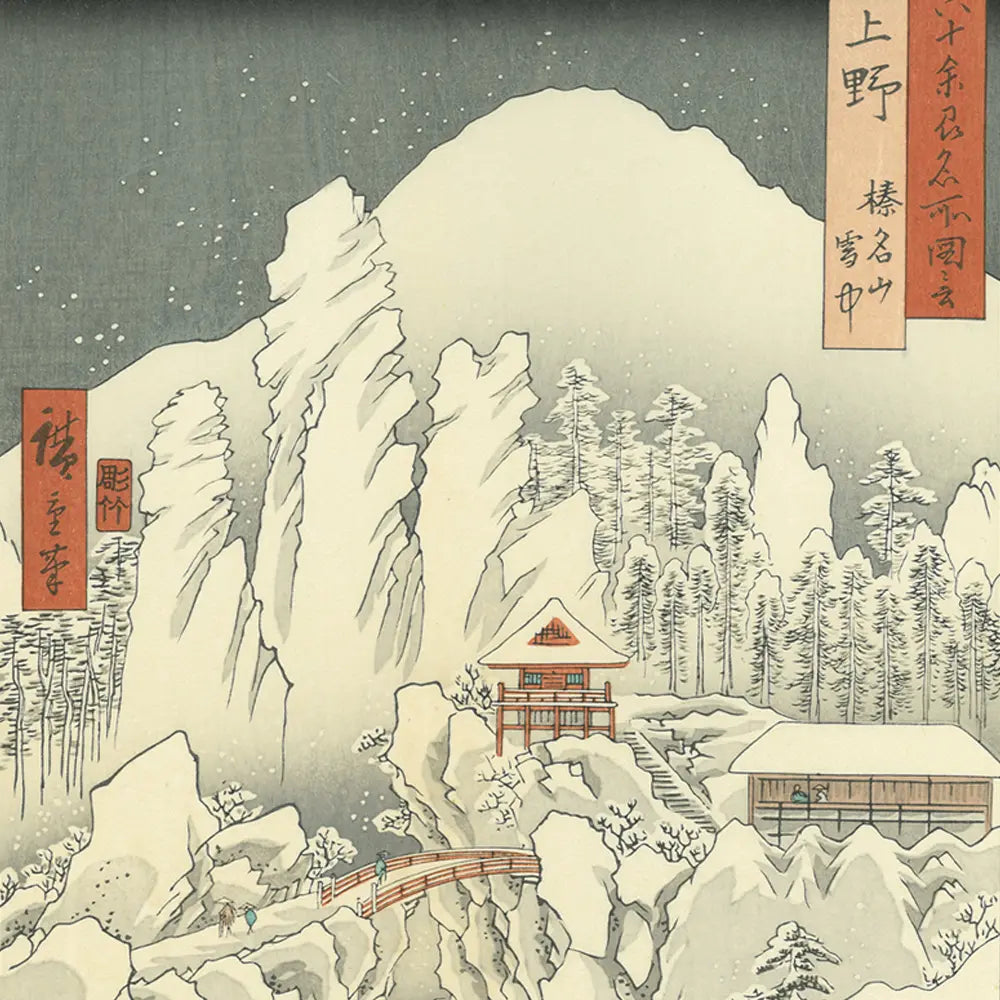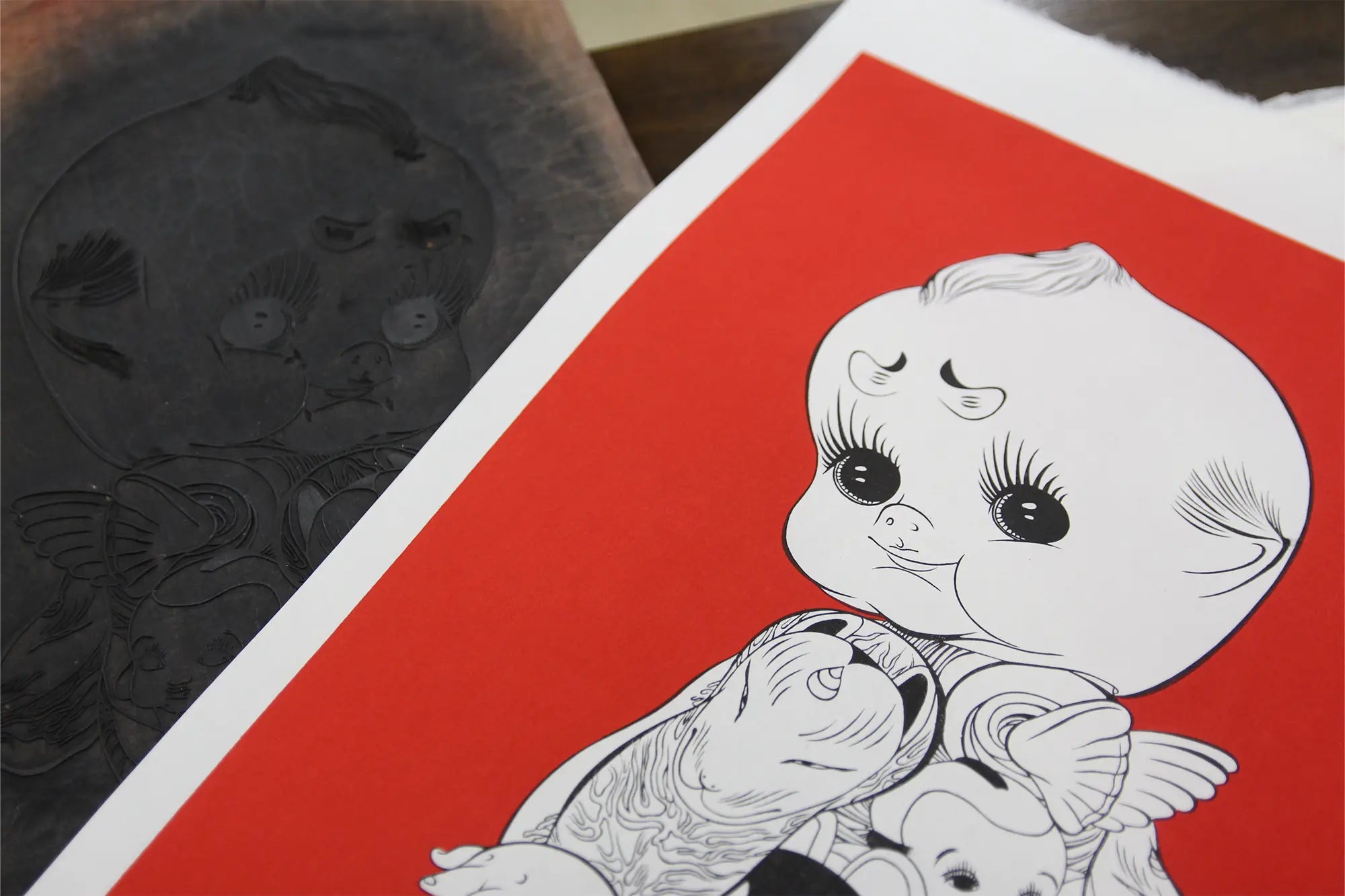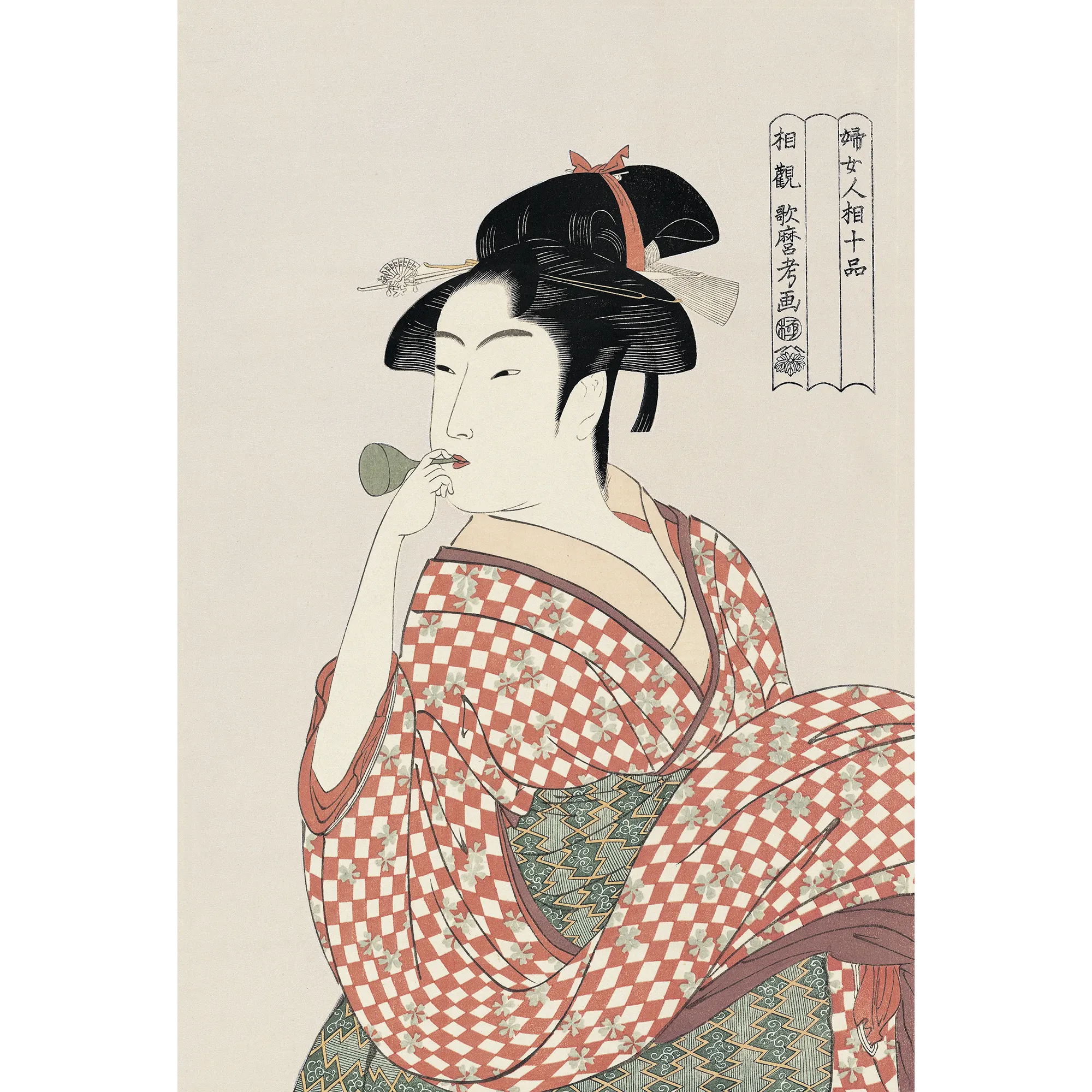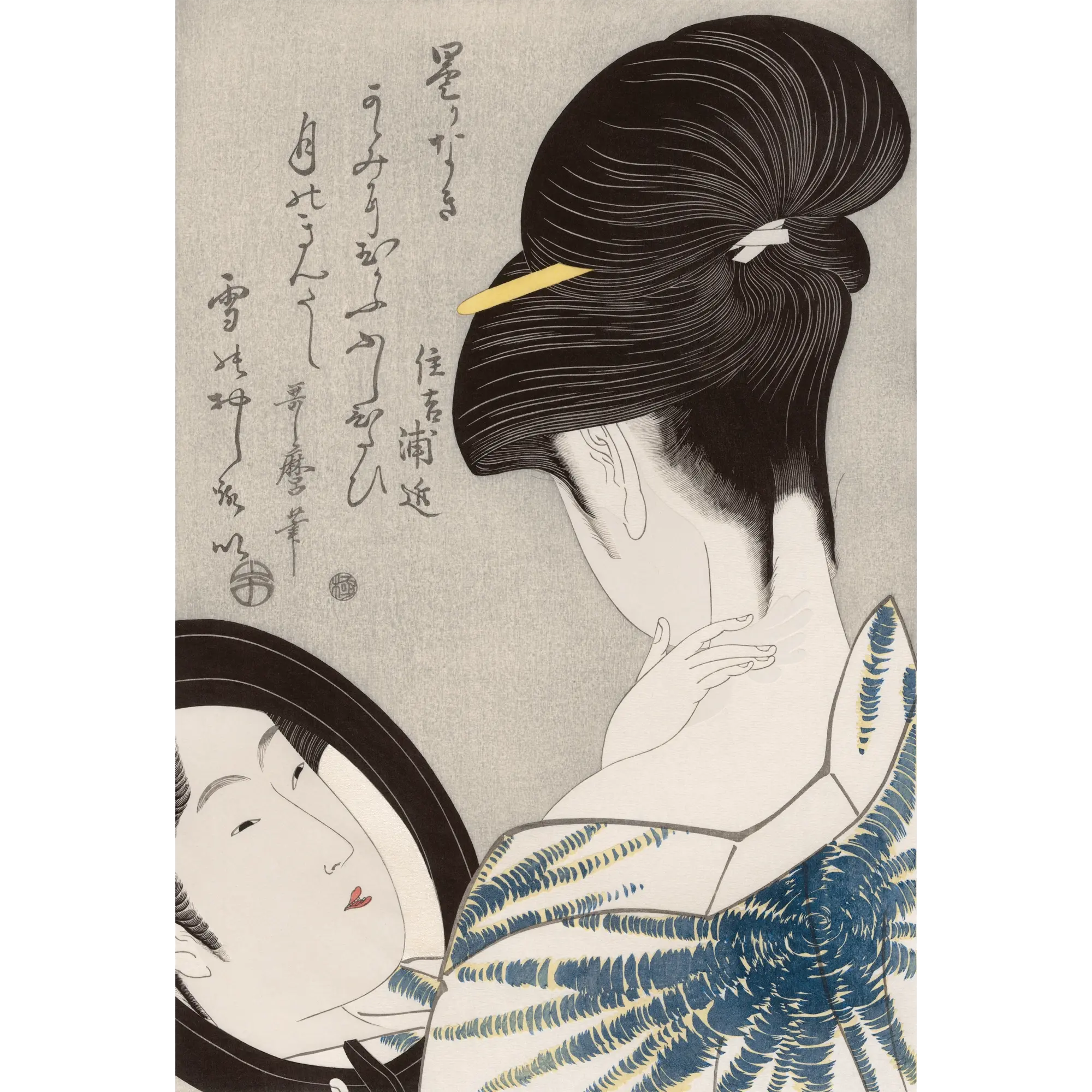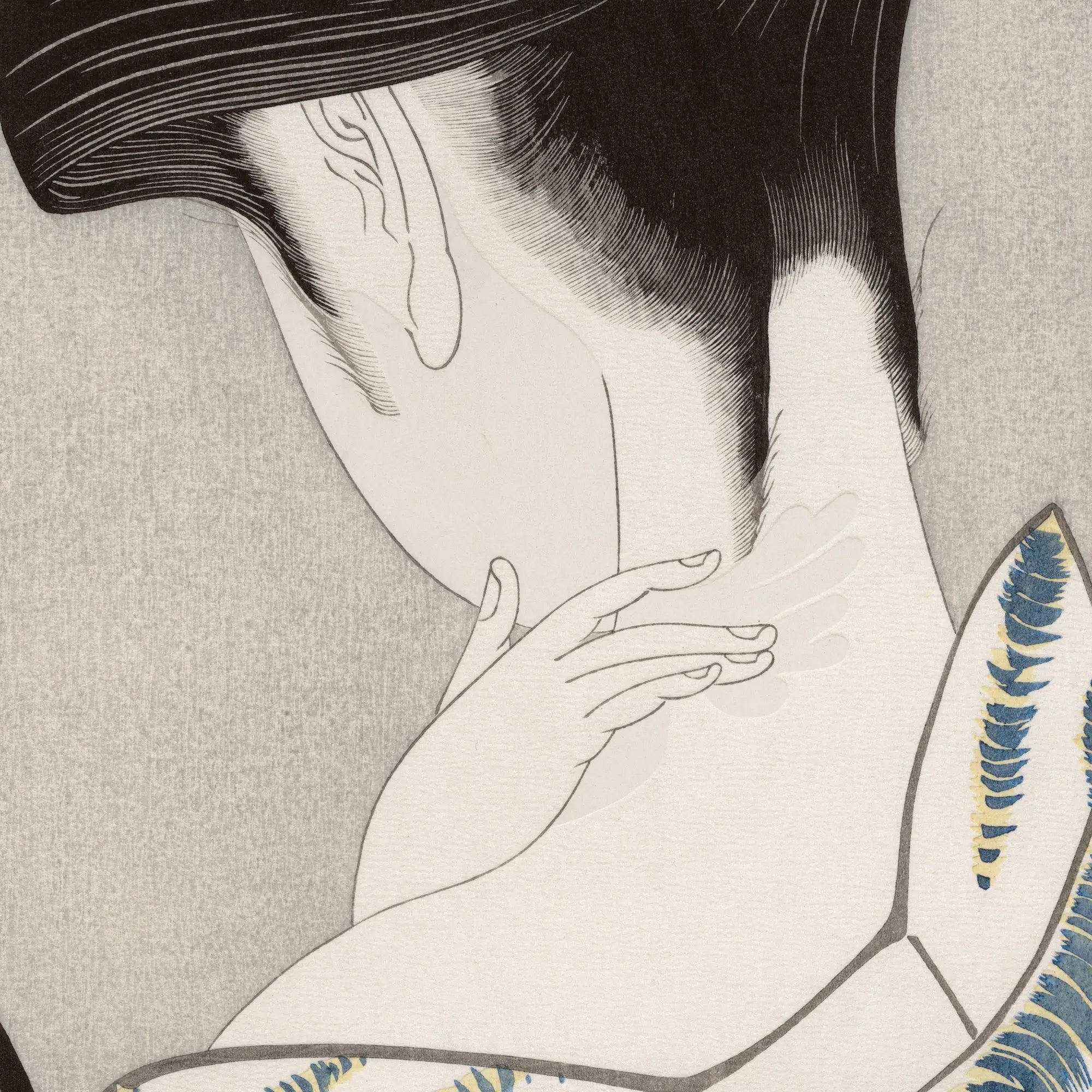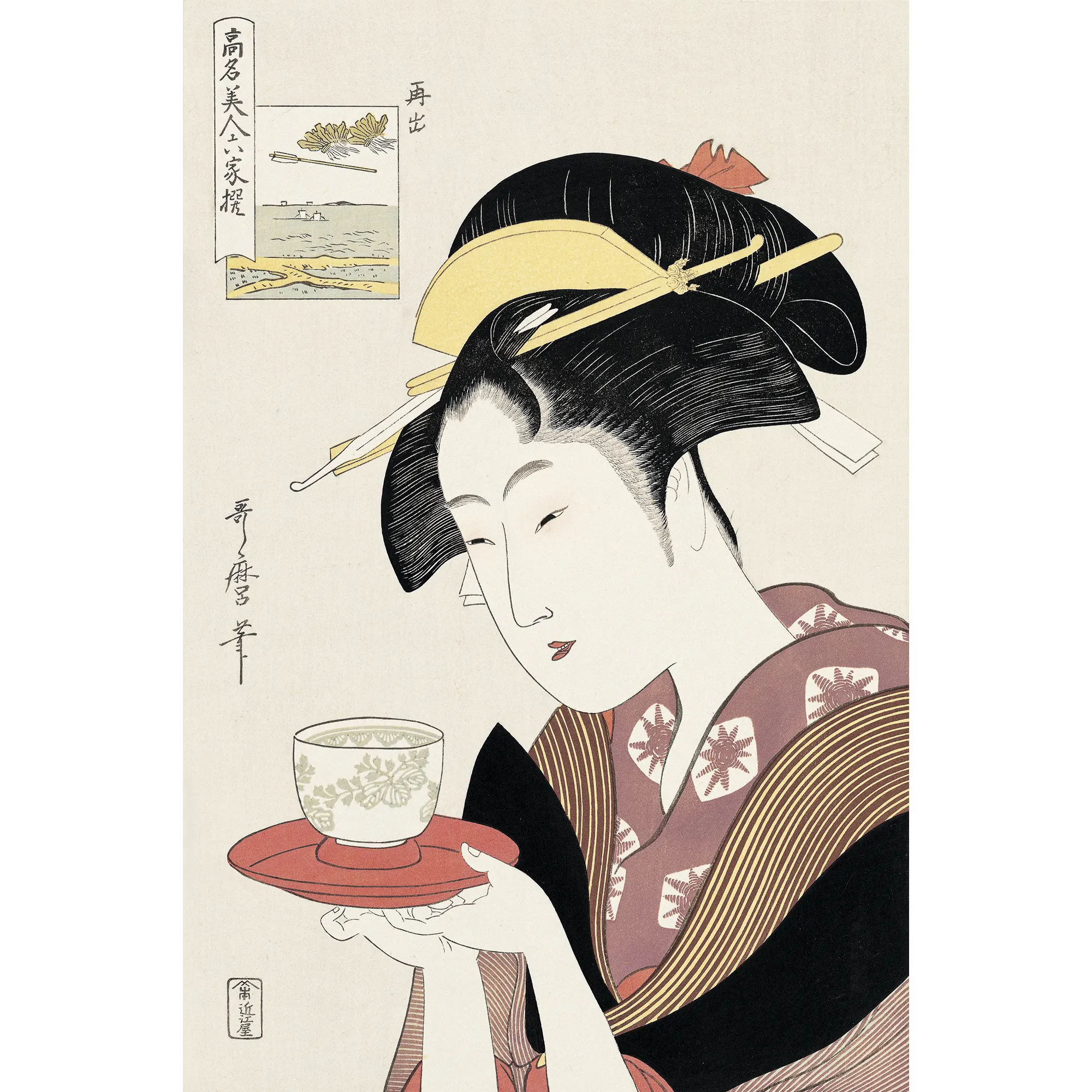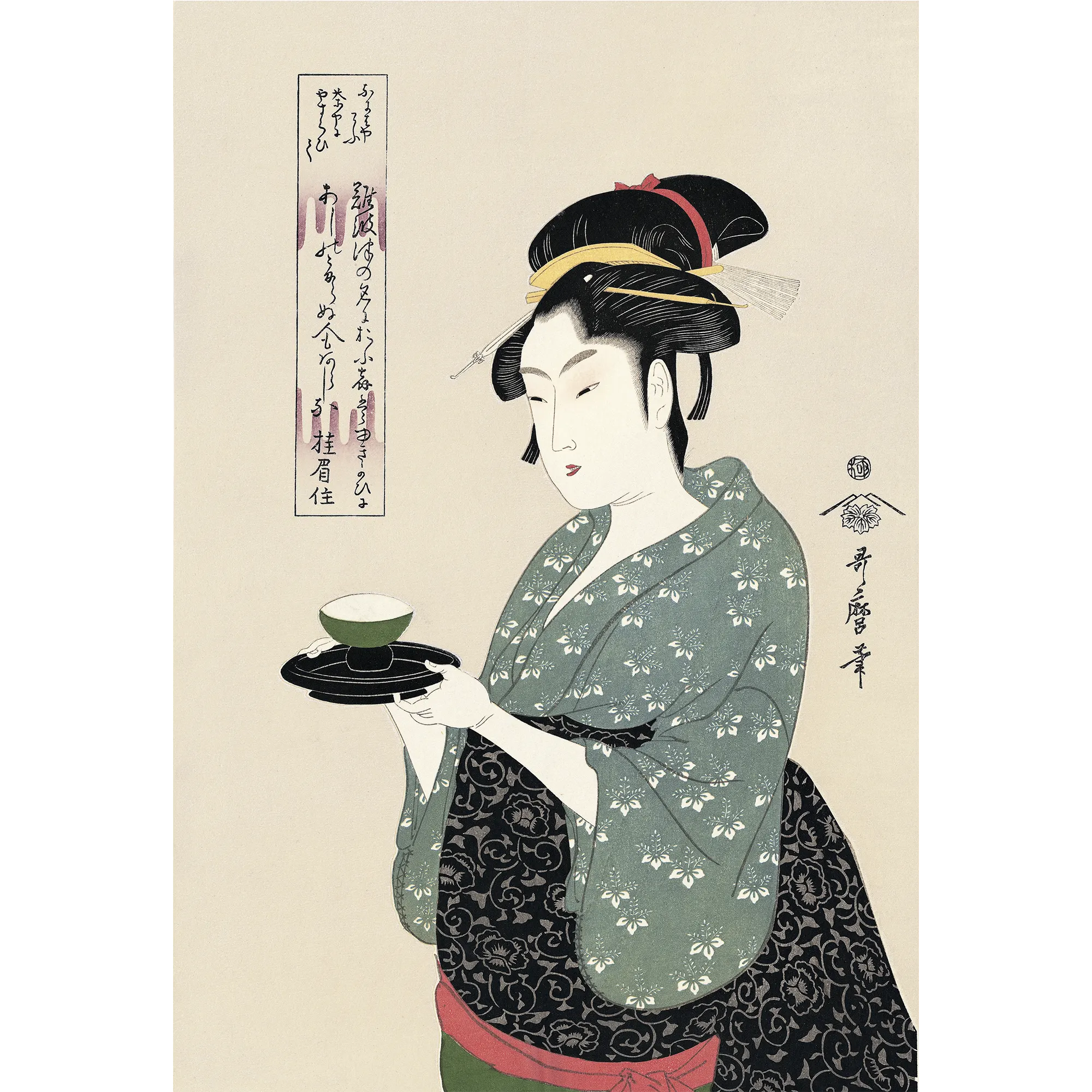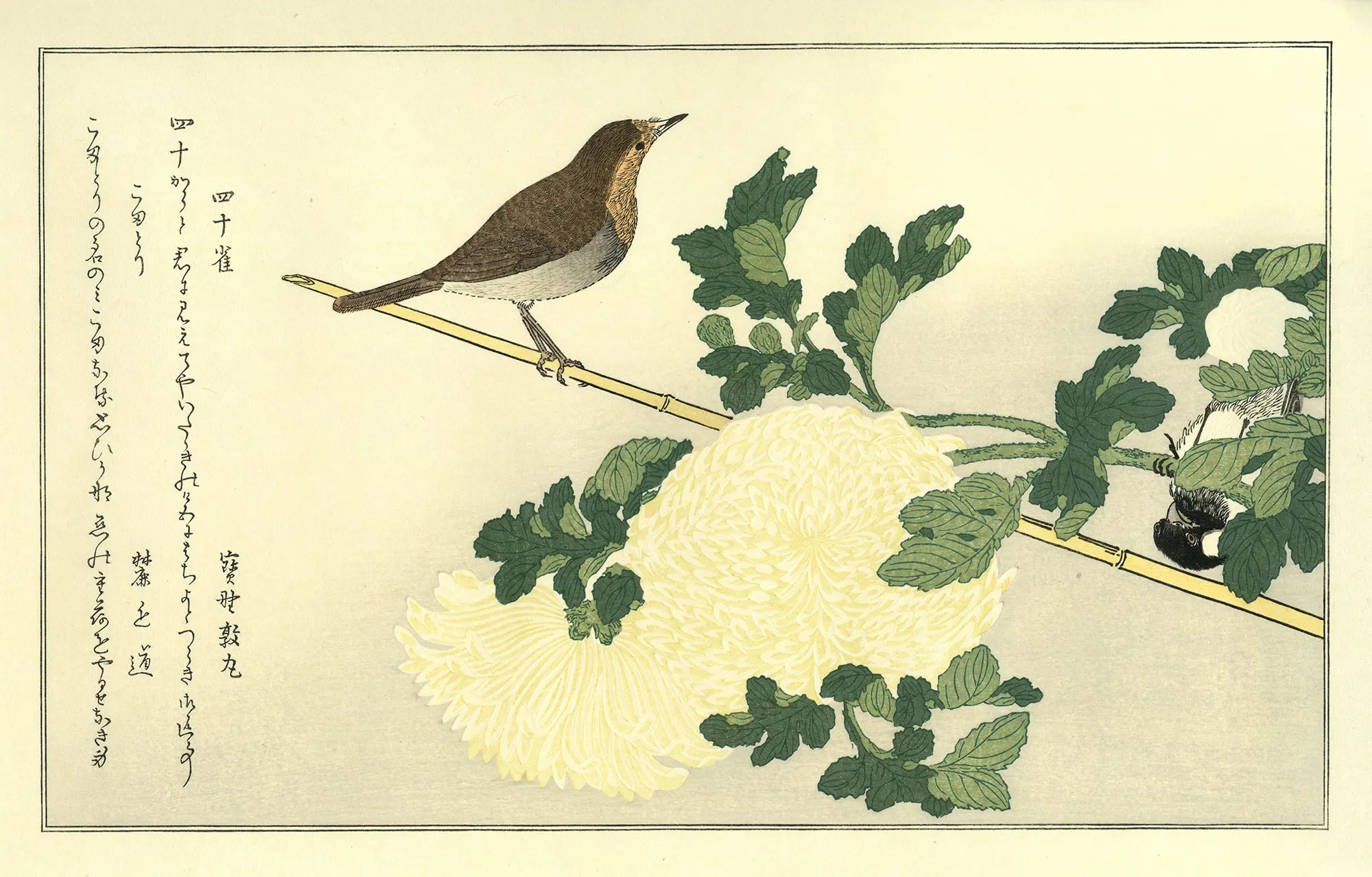

Manchurian Great Tit and Robin - Myriad Birds -
Kitagawa Utamaro (1753?-1806) became a popular artist after he was discovered the publisher Tsutaya Juzaburo (aka "Tsutaju"). He is known as the originator of okubi-e (portraits showing only the head or the head and upper torso) of beautiful women. But the first work he took on for Tsutaju was not bijinga (pictures of beautiful women) but illustrations for kyoka-bon (books of humorous poems). Around 1789, Tsutaju published three kyoka-bon, "Picture Book of Crawling Creatures (Ehon Mushi Erami)," "Gifts from the Ebb Tide (Shioi no Tsuto)" and "Myriad Birds (Momo Chidori)" and commissioned Utamaro to draw the illustrations. These were the works that made Utamaro famous as a brilliant artist. For "Myriad Birds," Utamaro drew various birds to match the poems included in the book. Although the illustrations are realistic representations of the subjects, they are also polished and refined. Intricate techniques are employed in all aspects of his work, such as the precise carving to convey the details of the birds, karazuri to give a three-dimensional effect to the bird feathers, and delicate shading. It is considered a masterpiece that manifests the true talents of Utamaro.
Price
Frame & Mat
A: Print only
The print is placed on the paper mat. The internal window of the top of the mat is cut for the image size.
| <For Yourself> | <For Gifts> |
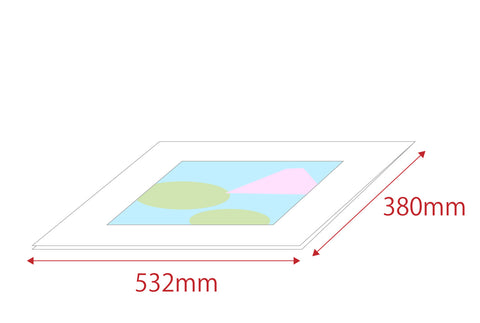 |
 |
B: Framed print
<Ukiyo-e Reproduction> The print is framed with the Adachi original ukiyo-e frame (400 × 555 mm).
<Contemporary Ukiyo-e> The print is framed.
 |
C: Print + matboard
This is a set of a print and a matching matboard. The internal window of a matboard is cut for the image size. The external dimension is fixed for the Adachi original ukiyo-e frame.
 |
|
 |
 |
Frame & Mat
A: Print only
The print is placed on the paper mat. The internal window of the top of the mat is cut for the image size.
| <For Yourself> | <For Gifts> |
 |
 |
B: Framed print
<Ukiyo-e Reproduction> The print is framed with the Adachi original ukiyo-e frame (400 × 555 mm).
<Contemporary Ukiyo-e> The print is framed.
 |
C: Print + matboard
This is a set of a print and a matching matboard. The internal window of a matboard is cut for the image size. The external dimension is fixed for the Adachi original ukiyo-e frame.
 |
|
 |
 |
| Size/Weight | Print Size: 37.0 × 22.5 cm |
| Material | Paper: Echizen Kizuki Hosho Washi made by Living National Treasure, Ichibei Iwano |
| Feature | Type of print: Woodcut Print |
| Notes | This product includes: ・An explanation of the work in Japanese ・A leaflet to introduce the production process of ukiyo-e print |
|
The order for domestic destination(inside of Japan) is shipped by Yamato Transport and international destination (outside of Japan) is shipped by either FedEx or Japan Post's EMS (Express Mail Service).
Domestic Shipping (Inside of Japan)
Yamato Transport Co., Ltd.
You can choose the delivery date and time window. Shipping fee is 700 yen for any destination inside of Japan.
<Free Shipping Service>*Domestic destination only
Free Shipping is available when a total of purchase is over 50,000 yen (for one destination) .
If you would like to choose the delivery date and time window, please fill the column of "Request of Delivery Date". Please note that only the date five business day after your order can be chosen and also this service might be canceled under some circumstances. Please ask us for details.
International Shipping (outside of Japan)
FedEx
Delivery dates are varied depending on the destination countries and areas.
EMS international shipping service may be used for the area which has no or limited FedEx delivery.
Actual shipping fee will be charged for the international delivery. (No free shipping over 50,000 yen purchase is applied for the international shipping.)
*No shipping is available on weekends.
Estimated Fee and delivery time
Area A : East Asia / Southeast Asia
Area B : North America / Indonesia
Area C : Europe / Middle East
Area D : Australia / New Zealand
Area E : South America / Africa / Other Areas
| Area | Delivery time | 1-5 Unframed Prints | One Framed Print |
|---|---|---|---|
| A | 3-6Days | ¥3,600 | 5,300 |
| B | 4-6Days | ¥4,000 | ¥6,000 |
| C | 4-7Days | ¥4,400 | ¥7,000 |
| D | 4-7Days | ¥6,500 | ¥8,000 |
| E | 4-7Days | ¥7,500 | ¥13,500 |
*Please read notes about international shipping
Customs
Please note that the customs may be charged to the consignee during the international shipping process. The customs' manner and fee are various depending on the country where the delivery destination is and the purchaser is required to be responsible for anything regarding customs. The purchaser is considered to agree with being responsible for customs when you place an order.
*FedEx offers the service to charge the custom to a purchaser (not a consignee) after the fee is fixed for the destination country. This service is useful when you would like to ship the item as a gift and do not want the consignee to pay for the custom. Please request us if you would like to use this service.
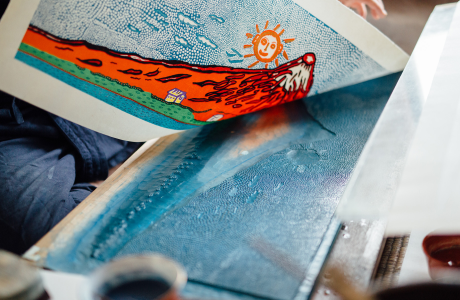
Adachi's Philosophy and Mission
At Adachi Institute of Woodcut Prints, we create attractive works that are in keeping with the times while maintaining the basics of traditional woodcut printing techniques.
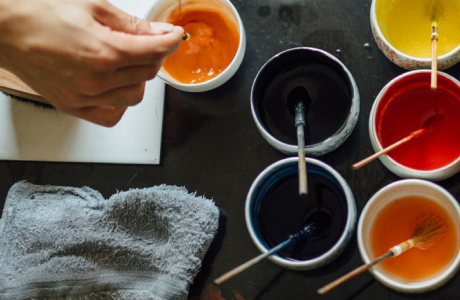
Adachi's Meticulous Quality and Materials
At Adachi Institute of Woodcut Prints, we use carefully selected materials and tools to bring out the original beauty of woodcut prints to the fullest.
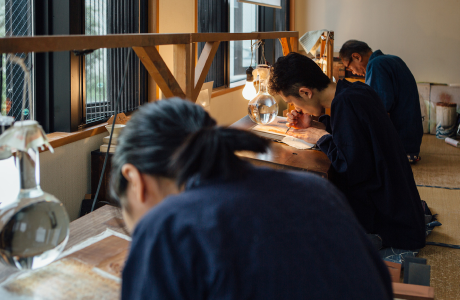
Traditional Techniques and Adachi's Artisans
The production of ukiyo-e, which developed as a commercial printing method, focused on efficiency and profitability. And so, all processes are streamlined and sophisticated. We will introduce the basics of ukiyo-e techniques.
